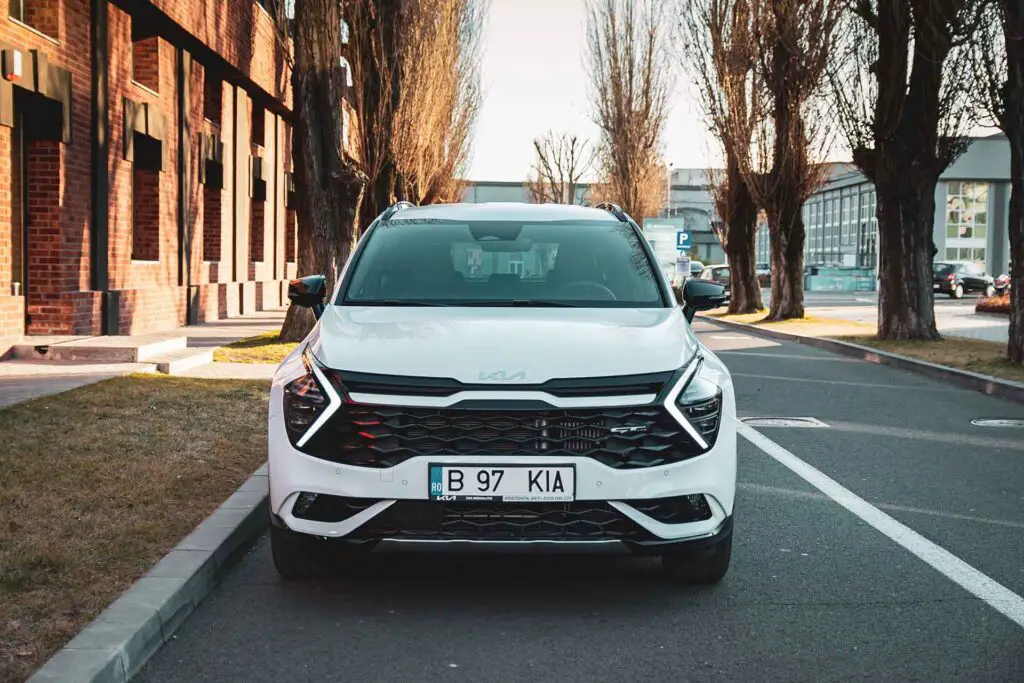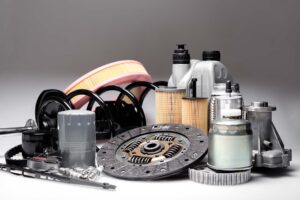Have you ever noticed that headlights look different while driving at night? Some are yellowish, some blueish, and some shine brighter than others. That’s because there are different types, and now that alternative options are becoming more popular, it’s brought one big dilemma among car enthusiasts – xenon headlights vs. LED. If you’re sharing this dilemma, here’s a detailed comparison to help you determine which headlights are the right choice for you.
There Are a Few Options When It Comes to Car Headlights
If you’re thinking about getting a new four-wheeler, you’ll quickly realize there are a few options for headlights, whether it’s a used vehicle or a brand-new one that came straight from the manufacturer. While halogen headlights used to be the most common type, xenons, and LEDs are becoming more popular these days. And then there are the laser ones, the newest addition to the evolution of cars that are just being put to use.
Here are the aforementioned types of headlights and how they work:
Halogen Bulbs Use a Combination of Gaseous Substances
A halogen bulb is made of a glass envelope that is resistant to high temperatures. It’s usually filled with a gaseous combination of argon and nitrogen, and its most important part is the tungsten filament, which glows brightly once an electric current is passed through it. Halogen headlights receive electricity from the vehicle’s battery, and when they reach a temperature of about 2,500℃, they glow.
Xenon Headlights Run Electricity Through Gas of the Same Name
The name of this type of headlight comes from the gaseous substance used – when electricity is run through a gas called xenon, it starts to produce a recognizable whitish glow. There’s no tungsten filament and no burning up to high temperatures, so xenon light bulbs tend to last longer than their halogen counterparts.
LEDs Are Semiconductor Diodes That Can Produce Light
LED stands for light-emitting diode, and these are semiconductor diodes that produce light once voltage is applied. These electronic elements are made from silicon and other materials that ensure electrical currents flow in certain directions. LEDs can emit light of different color temperatures, and they are a durable and energy-efficient way of creating a glow.
Laser Headlights Create Light With the Help of Mirrors and Phosphor
As the name itself suggests, for this type of headlight, lasers are used to light up the road. But, it also uses a set of small mirrors that focus the energy of the lasers on a small lens that contains phosphorus gas. Once this lens gets into contact with laser beams, white light is created and directed toward the front of the headlight structure.
Pros and Cons of Each Type of Car Light
Before we get into comparing the main two types, the xenons, and LEDs, in various different aspects, here’s a brief overview of the pros and cons of all four types of car lights:
| Type of Car Light | Pros | Cons |
| Halogen | Very good price-to-quality ratio | Not very durable and energy-efficient |
| Xenon | Produces extremely bright light | Complex structure and costly replacements |
| LED | Very energy-efficient and produces different levels of brightness | Require the use of a cooling system |
| Laser | Very bright and power-efficient | Costly and require the use of a cooling system |
Xenon Headlights vs. LED – Light Production and Brightness
While driving at night, it might be difficult to figure out which oncoming headlights are xenons and which are LEDs, as they are quite similar when it comes to illumination and brightness. The exceptional light production of both of these is what made them popular in the first place. However, the two have slight differences, so here’s how they compare in terms of illumination.
Xenon Are Known for Their Extreme Brightness
Xenons are often referred to as HID headlights, and this abbreviation stands for high-intensity discharge. Knowing that, it’s easy to figure out why xenons are one of the top choices when it comes to headlights. Most of them produce between 3,000 to 5,000 lumens when at full brightness, whereas LEDs produce between 2,000 to 4,000 lumens on average.
So, most xenon HID shines brighter than both the LED and standard headlights. Also, compared to other alternatives, the light they produce is more evenly dispersed, which gives you a better view of the road.
Xenons Are Brighter but LEDs Are Not Far Behind
While xenon takes the top spot when it comes to illumination, the LEDs are close behind and can throw light up to 300 yards in front of your vehicle. Also, the small size of these light-emitting diodes means many of them can be put into one headlight lamp, and that will result in better overall illumination. That way, an LED creates warmer light and an illuminated area that’s larger than the one made with average xenons.
Furthermore, LEDs provide the possibility of automatic adjustment of different light levels while driving, reducing the risk of blinding the drivers heading toward you. So, the way headlights work and their ability to illuminate the road and obstacles on it is directly connected to safety.

Great Light Production of Both Means They Help Keep Everything Safe on the Road
According to the Insurance Institute for Highway Safety (IIHS), nearly half of fatal car accidents occur in the dark. The number one driver’s responsibility is to ensure the safety of everyone involved in traffic, and headlights obviously play an important role when it comes to it. The amount of light they can produce provides you with visibility on the road, especially in inclement weather or while driving at night.
Both the LED and the Xenon Offer a Pretty Good View of the Road
Since both of these are great at producing quality light, you can be assured that they will provide a clear view of obstacles, pedestrians, and cyclists on the road, no matter the weather and time of day you’re driving.
Both the LED and the xenon offer high-beam assist, meaning they can automatically turn on the high beams when you are in dark areas. Furthermore, both types also have curving technology, enabling the light beams to bend around the corners together with the wheels.

No One Beats LED When It Comes to Energy Efficiency
One of the most important aspects to consider when choosing the right type of headlight is energy efficiency, in other words, the amount of power required to produce light. There is a clear winner here, and it’s the LED, as they use energy more efficiently than both the halogen bulbs as well as the xenon HID. This directly influences the lifespan of these lights, so LEDs take the crown in the durability aspect as well.
The Extreme Brightness Xenons Produce Means More Energy Is Used
While xenon can produce higher levels of brightness, it comes at a cost because they require more energy than your standard LED light. So, while xenons are more efficient than incandescent halogen lights, they can’t compare to LEDs and their very low energy expenditure. Because of this, certain hybrid cars, such as the Toyota Prius, use LED technology, and not just for the headlights.
LED Lights Also Run Cooler Than the Xenon Bulbs
Besides being the most energy-efficient choice, LEDs also have less heat emission because they use electricity instead of heat in order to produce light, as well as a fan to keep the light bulb cool. Less heat emission and energy consumption directly influence the lifespan of the headlights, so the LEDs perform better in the durability aspect as well.

LED Have the Biggest Lifespan Out of All Available Options
As mentioned above, energy efficiency is the key factor when it comes to durability. Increased energy consumption will lead to the bulb dying quicker, and that means you will have to replace it sooner. So, if LEDs have the lowest energy expenditure, you can obviously expect them to last much longer than their counterparts.
The Secret to LED’s Longevity Is Hidden in the Technology Behind It
The reason why you likely won’t need to replace LEDs in the timespan you own a particular vehicle is due to their construction. LEDs don’t contain any parts that could be susceptible to burnout or breakage, there’s no gaseous substance such as xenon or halogen, and there’s no filament that will eventually burn out.
Both the Xenon and Led Have an Impressive Lifespan but There Is a Clear Winner
While both the xenons and LEDs outlive the standard halogen bulbs because they don’t have the tungsten filament, the LED is still unbeatable. On average, LEDs can last up to 45,000 hours, or 15+ years, while xenon has a lifespan of 5,000 to 15,000+ hours, or 5+ years.
This means that with both of them, replacing headlights and tail lights is not something you’ll have to think about a lot. However, with LEDs, you might not have to replace them at all, as they can last longer than most drivers will own their cars.

Xenon vs. LED – How Do They Compare When It Comes to Cost and Design?
While LEDs can be more expensive upfront, the cost probably evens out when you take into account their durability. Also, xenon is more complex in its design, and if some parts need to be replaced, it will most likely be more expensive than replacing LEDs. So, it comes down to your personal preference, as the cost of owning a car is more or less the same no matter what you go for.
LED Are Comprised of Fewer Parts but Require a Cooling System
Thanks to fewer parts and smaller dimensions, LEDs can have a more attractive look, as they provide the possibility of a flexible design that can be of any shape or size. Usually, LEDs are comprised of only three main parts:
- Light-emitting diodes,
- Locking tabs,
- Heatsink, or a fan.
Although LEDs don’t emit heat, they do produce a certain amount of it at the bottom of the emitter, and that can be risky for adjacent cables and other assemblies. That’s why LEDs require a cooling system, which makes their installation in cars a bit more difficult and expensive, as this additional component needs to be implemented in the engine bay.
Xenon Has a Complex Design and Requires a Washing Mechanism
Xenon headlights have a somewhat similar design to halogen bulbs, and they are comprised of four main parts:
- Electrodes,
- Locking tabs,
- Inner quartz chamber,
- Outer bulb.
Besides the main components listed above, xenon headlights need to be equipped with a sprinkler mechanism because dirt or dust can disperse the emitted light and blind the other drivers in the opposite direction. This mechanism usually functions automatically and starts working the moment you use the windshield wipers and their sprinklers for the first time.

The LED Outperform Xenons in Most Aspects but It All Comes Down to Your Personal Preference
So, now that you know how each of these compares in various aspects, you can come to the conclusion that overall LED is the better choice. However, both the LED and the xenon headlights outperform standard halogen ones, so if you go for the xenons because of a personal preference, it’s also an excellent choice. At the end of the day, it’s important to be as comfortable as possible in your four-wheeler, and that’s done by implementing parts that are the right fit specifically for your requirements.








